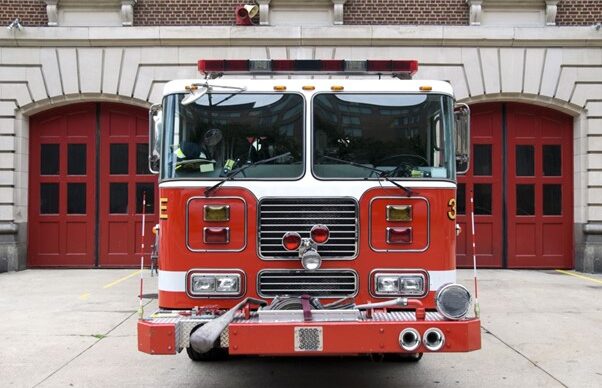NEWS
Safe and suitable firefighting
Campaigns |Published: Nov 10, 2024

Following on from the EV maritime safety conference, speaker Martin Carlsson who works for Stena Teknik in Sweden shared some information from the RISE Research Institutes of Sweden, details of which can be found below.
Ensuring safe and suitable firefighting onboard ships: best practices from RISE research institutes of Sweden
Firefighting onboard ships presents unique challenges, requiring careful selection of both equipment and tactics. The RISE Research Institutes of Sweden, through its research project Safe and Suitable Firefighting, has provided valuable guidance for those responsible for ensuring that personal protective equipment (PPE) and firefighting strategies are fit for maritime conditions. This article explores the key recommendations from the project, focusing on fire suits and essential equipment needed for safe and effective firefighting operations onboard ships, particularly ro-pax vessels.
The importance of properly certified fire suits
One of the most important elements of safe firefighting onboard is the use of properly certified fire suits. For most ship types, including ro-pax vessels, fire suits should be certified to EN 469:2020 with performance level 2. This certification ensures that the fire suits provide adequate protection from heat transfer caused by flames, contact heat, and radiation, while also offering moisture resistance and breathability.
The Wheelmark symbol found on fire suits indicates compliance with the Marine Equipment Directive (MED). EN 469-certified suits are preferable for shipboard firefighting, as opposed to aluminised suits, which are designed for specific scenarios such as quick rescue operations in extremely high radiant heat conditions.
Fire suit design for optimal protection and safety
For full protection and enhanced mobility, several design features should be considered when selecting fire suits:
- Pre-bent knees and elbows improve mobility, allowing firefighters to move more easily in confined spaces.
- Knee pads protect firefighters when crawling on hot or hard surfaces.
- Wristlets with thumb loops prevent sleeves from riding up, reducing the risk of skin exposure.
- Long-sleeved undergarments should be worn underneath the fire suit for added protection. Fire stations should be equipped with spare clothing in case firefighters are wearing short-sleeved tops.
- Ensuring the correct size and fit is essential for full protection. Fire suits should be tailored to both male and female body proportions, recognising the differences in body shape.
Essential equipment for firefighters
In addition to fire suits, several pieces of equipment are vital for firefighters to operate effectively onboard:
- Lightweight breathing apparatus (BA) cylinders are preferred over steel cylinders to reduce the physical strain on firefighters.
- Communication devices with integrated microphones and speakers should be part of each firefighter’s kit, ideally built into the helmet or breathing mask for hands-free operation. These devices should also meet appropriate IP ratings for durability and water resistance.
- Helmet-mounted flashlights allow firefighters to keep both hands free while working in dark or smoke-filled environments.
- Other essential tools include thermal imaging cameras (TIC), general arrangement (GA) plans, fire plans, and bolt cutters, all of which should be easily accessible and stored in fire stations, ready for immediate use.
Safe handling of contaminated fire suits
After a fire, fire suits are likely to be contaminated with hazardous substances. It is important to follow best practices when removing and handling contaminated gear to protect firefighters’ health. The Skellefteå Model offers guidance on this process, advising that fire suits be removed before the self-contained breathing apparatus (SCBA) and stored in airtight bags. This process should be carried out outside to prevent skin contact or inhalation of contaminants.
Fighting fires in Alternative Fuel Vehicles (AFVs)
As the maritime sector increasingly adopts AFVs, such as battery-powered electric vehicles and gas-powered vehicles, new challenges arise in firefighting. Although the likelihood of fires in AFVs is lower than in conventional vehicles, they can release more hazardous gases, such as hydrogen fluoride (HF), when lithium-ion batteries burn. HF is highly toxic if inhaled, but the risk of skin absorption is low for firefighters wearing full PPE.
According to RISE research, fire suits certified to EN 469 level 2, along with gloves, boots, flash hoods, long-sleeved undergarments, and BA kits, provide good protection against heat, temperature, and the fire gases produced in these incidents. Continuous training and preparation are critical to ensure that firefighters are ready to safely handle fires involving AFVs.
Conclusion
The research conducted by RISE highlights the importance of selecting the right equipment and tactics for firefighting onboard ships. By adhering to certification standards, using appropriately designed fire suits, and equipping firefighters with essential tools, the maritime industry can greatly enhance the safety and effectiveness of its firefighting efforts. Understanding the specific risks associated with modern technologies, such as alternative fuel vehicles, is crucial to maintaining high safety standards as the sector evolves.
For those involved in maritime fire safety, these recommendations provide a robust framework for ensuring that firefighting operations onboard ships are both safe and effective.
